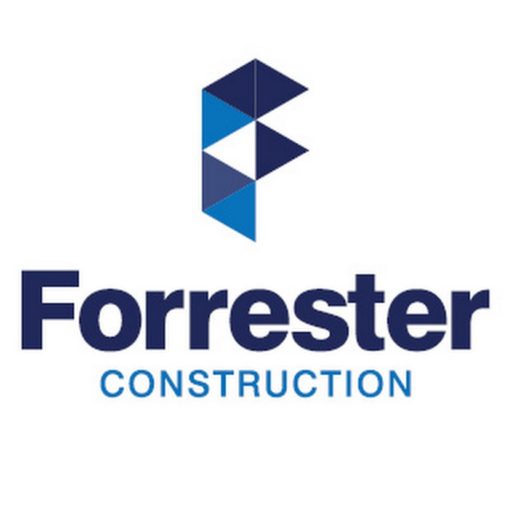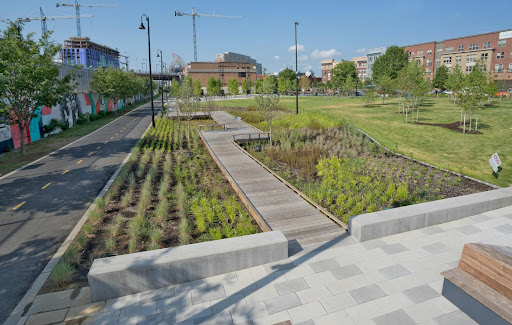Commercial construction’s role in a sustainable building is all-encompassing. Though residential buildings are starting to feature eco-friendly amenities and solutions, commercial buildings hold the promise of making the largest impact. According to a study from Supply Chain Sustainability School, construction sites can use between 25% to 40% of total energy, making sustainable building efforts more crucial than ever.
What is a Sustainable Building?
A sustainable building, or green building, is a building that is designed, constructed, and operated in a way that reduces negative impacts on the environment. Green building practices aim to preserve resources and improve individuals’ and communities’ overall quality of life.
Goals of Sustainable Building

There are many green building organizations and certification programs that ensure projects are built sustainably. Though their points systems vary in what features are scored, most green building organizations and initiatives have the same or similar goals including:
- Reducing impact on climate change
- Protecting and restoring water resources
- Protecting biodiversity and ecosystems
- Promoting regenerative material cycles
- Improving the quality of air, water, and light
- Enhancing community and individual quality of life
Benefits of Sustainable Building
Buildings designed, constructed, and operated using sustainable materials and practices reap many benefits surrounding the health of our community and environment.
Human Health
Green buildings lend to individual and community wellbeing. Employees, residents, and patrons of buildings constructed and operated with sustainable materials and practices are generally healthier and happier. Green buildings have cleaner air and water quality, promote health and comfort, and lower our exposure to toxins and hazardous substances.
The interior climates of green buildings are also better controlled for people and products. The U.S. Green Building Council (USGBC) says, “By improving energy efficiency, green buildings also help reduce indoor air pollutants related to serious health issues.”
Ecosystem Health
Sustainable buildings help reduce water and energy usage and overall support our ecosystem’s health through supply chain management and restorative practices. For example:
- Choosing low-flow or dual-flush toilets can help bring down water usage.
- Installing green roofs, LED lights, and lights that turn off when motion has not been detected can lower a building’s overall energy usage.
- Green roofs and bioretention areas can also help with stormwater management and pollution.
Because operations of sustainable buildings require less energy and water, one of the long-term benefits of a green building is saving money on utilities.
Climate Health
The amount of CO2 and greenhouse gasses produced during construction can be greatly reduced by limiting the amount of embodied carbon in our building materials. What are the worst offenders? Concrete, steel, aluminum, and plastic have some of the highest levels of embodied carbon.
More sustainable building materials that contribute to better climate health include wood, mudbricks, and recycled materials. Incorporating more sustainable materials reduces the carbon footprint a construction site creates.
Circular Economy
Using reusable and recycled materials during construction and designing buildings for adaptability and reuse potential support a circular economy. Choosing to renovate instead of demolishing and/or building a construction project from the ground up helps reduce waste by reusing and improving upon structures that are already in place.
Green Building Certifications and Organizations
There are many programs that contractors can follow when looking to embrace sustainable building. Certifications that buildings can receive for their sustainability efforts include:
- LEED (Leadership in Energy and Environmental Design) certifications are issued by the U.S. Green Buildings Council (USGB), one of the most recognizable green building organizations in the United States. The USGB has nine certification programs, including commercial, new construction, and retail. The number of sustainable features your project incorporates determines whether your project is LEED Certified, LEED Silver, LEED Gold, or LEED Platinum.
- WELL certification programs are a roadmap for improving light, air, and water quality. The number of points earned across 108 features and 10 concepts determines whether your building achieves one of four certification levels: Bronze, Silver, Gold, or Platinum.
- Energy Star certifications are obtained through the Department of Energy and the Environmental Protection Agency.
- Another globally recognized certification is BREEAM. This environmental assessment method determines a building’s environmental impact. For example, does the building leak energy? Does the project have a method of recycling rainwater? Is the building able to utilize and store solar power efficiently?
- International standards, such as ISO 104001, establish a set of best practices for commercial construction companies to manage their resources in cost-effective and sustainable ways.
Achieving a green building certification shows that construction companies are not only aware of their role in sustainable building but are actively working toward a more sustainable future. Architecture Daily has a more extensive list of green building certifications, including some international organizations.
Highlighting Commercial Construction’s Progress
Although Corporate Social Responsibility (CSR) is not a certification, it does show potential clients and partners that a construction company is working across all fronts to encourage sustainability. Materials are green, workers are treated fairly, historically underrepresented people are represented at all stages of the project, and cultural and socioeconomic considerations were made before building.
Many government entities and private companies are actively seeking intentionally proactive commercial construction companies in all aspects of our shared global environment.
Example of a Green Building

The Kensington of Falls Church is a high-end assisted living community designed by Moseley Architects and constructed to LEED Silver standards. This 100,000 SF building earned it’s LEED Silver Certification by implementing several sustainable and high-performance features.
The implemented strategies and solutions include:
- Sustainable site development
- Water savings
- Energy efficiency
- Materials selection
- Indoor environmental quality
After its initial year of operation, Moseley Architects reported the following operational savings:
- Energy savings approx. $ 33,500 / yr.
- Water savings of approx. $ 8,300 / yr.
- Total utility savings of $ 41,800 / yr.
Conclusion
The sustainable building movement continues to grow in popularity, and many businesses are already benefiting from owning or renting a green building. With commercial construction undoubtedly playing a role in our environment, sustainable building practices offer ways to minimize our impact and improve our overall quality of life.
Want to learn more about the construction industry? Read more of our blog posts.

